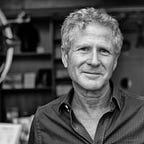Startup Life: Getting your MVP right
This story was first published on Linkedin.
A founders’ vision of their product encompasses multitudes, and includes many features and capabilities, all integral to making it a glorious, seamless, and pleasing creation. The minimum viable product is a series of stable stepping stones helping establish and discover a path to achieving that ideal.
A product has to do many things to satisfy its customer. Much of what it will do is key, but much more will be ancillary, intended to make the experience complete, pleasant, easy, and integrated to the rest of the customer’s world.
A minimum viable product is a concept (possibly first coined by Marc Andreessen in his now defunct blog.pmarca.com and popularized by Eric Ries and Steve Blank’s Lean Startup movement) to guide and focus early-stage development on creating a product with only those key features needed to validate the hypothesis of the products’ necessity and suitability.
The MVP helps teams prove the fundamental soundness of their belief that there is a market and need for their product, without unnecessary expenditure. This is necessary for speed to market and cost containment, but most importantly because the quicker one can do these tests, the sooner one can move on either to exploiting the opportunity, or (more likely), to refining or pivoting on the hypothesis, without having wasted precious runway on dead-ends or irrelevant frills.
So, how does one decide what makes it into the MVP and what doesn’t? My experience is that in my own product creation efforts as well as those of many startups I’ve advised, that this is a challenge for founders. We tend to see the shining big picture, and to fall in love with recently conceived, cool affordances and embellishments.
I’ve found a couple of ways of hacking the founder mindset to figure out whether something should be in or out of the MVP.
The simplest trick is one we used at Activeweave/BlogRovr, which I co-founded with [the fabulous] Jean Sini. We had a basic rule: it took 2 votes for to decide to include something in the product, and only 1 against to not include it. In this way, each of our pet, cool, most recent, ideas had to run the gauntlet, winning over both of us in order to make it into the MVP. It worked surprisingly well, as there was always one of us who hadn’t lost his head over a feature.
More formally, I’d suggest that teams focus on the difference in the goals addressed by “Product” and “MVP.” A product is intended to satisfy customers, solve their problems, and make their experience delightful. It is intended to get customers to pay top dollar for it, and to prevent them from jumping ship and going over to the competition.
The MVP is intended to do something very different. It is intended to prove to the early-stage startup that the notion of the problem it is tackling is accurate, and the solution it is suggesting addresses it, even when using it may be less than polished and complete.
When considering whether some functionality needs to be part of the MVP (and that word is purposeful — the goal is to implement as little functionality as possible and none that don’t need to be a part of the MVP), I like to go through the following process:
- First, identify a set of functionality which, if the product does nothing else, you believes would inspire people to use your product (albeit with less delight than if the set were larger).
- Then, for each capability or feature in that set, decide if taking it out would it be a deal-killer, causing users to no longer want to use the product. If they’d still use the product without that feature, then it isn’t part of the MVP.
Also, the MVP isn’t one-and-done. Like on the product itself, startups need to iterate on it, pivoting, and incorporating learnings about the product and the market, to make new revisions.
Therefore:
3. Rinse, lather, repeat, incorporating insights from the prior experiment.
Eventually, the market, the product, and the business model will be in sync (all these are being explored with the MVP), and it will be time to work on the bells, whistles and the hard work of filling in the details of the grand vision.
